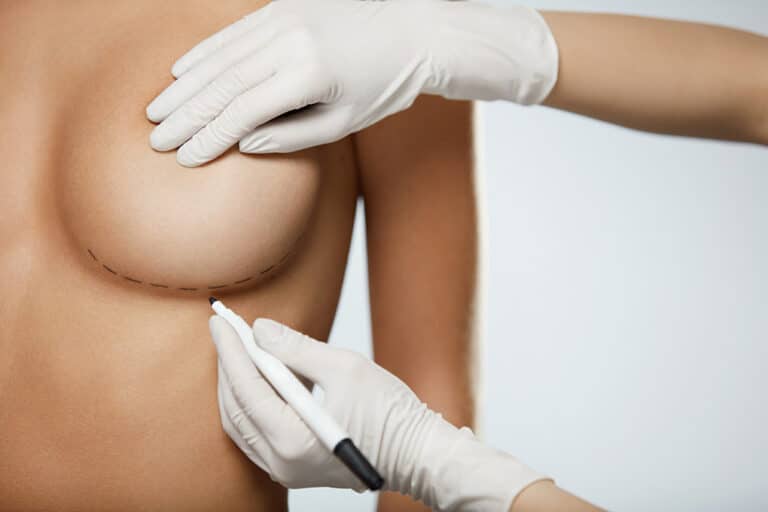What to Know About the Recovery Period After Otoplasty
Otoplasty surgery, often sought for its transformative ability to reshape and adjust the ears, offers a solution for those dissatisfied with their ear size, shape, or positioning. This surgical procedure not only enhances aesthetic appearance but also boosts self-confidence by addressing concerns that might have been sources of discomfort or self-consciousness. As advancements in medical techniques continue to evolve, otoplasty presents a safe and effective option for individuals aiming to achieve a more balanced facial symmetry through minor yet impactful corrections.
Understanding Otoplasty Recovery Timeline
Initial Healing
The recovery period for otoplasty surgery begins immediately after the procedure. Patients can expect the initial healing phase to last between 1 and 2 weeks post-surgery. During this time, it’s common to experience some discomfort, swelling, and bruising around the ears.
Most patients notice a significant decrease in swelling and bruising after the first week. It’s crucial during this stage to follow all post-operative instructions provided by your surgeon. This includes wearing any supportive dressings or headbands as directed to ensure optimal healing.
Full Recovery
Achieving full recovery from otoplasty surgery takes time. The recovery process unfolds over several months, with final results typically visible within 6 months post-surgery.
Patients should observe gradual improvements as their ears heal and adapt to their new shape. Although most of the noticeable swelling and bruising subsides within the first few weeks, subtle changes continue as tissues fully heal. Patience is key during this phase, as rushing or neglecting care recommendations can affect outcomes.
- Key points for successful recovery include:
- Following surgeon’s instructions carefully.
- Keeping follow-up appointments for monitoring progress.
- Avoiding activities that could strain or impact healing ears.
Understanding these phases helps manage expectations about one’s appearance immediately following surgery versus several months later when true results emerge.
What to Expect After Otoplasty Surgery Day by Day
Initial Recovery
Day 1 after otoplasty surgery involves bandages around your head. You might feel mild discomfort. Pain medication can help.
By days 2-3, you’ll notice a reduction in swelling. Itching under the bandages is common. Resist scratching to avoid complications.
Follow-up Visit
Day 7 marks your first follow-up visit. The doctor may remove the bandages. This is a crucial step towards healing.
Your surgeon will check for signs of infection or improper healing during this visit. Following their advice is essential for a smooth recovery.
Understanding what happens after otoplasty surgery helps manage expectations and promotes better outcomes. From immediate post-surgery care to the critical first follow-up, each day brings you closer to seeing the full benefits of your procedure.
Remember, every patient’s recovery journey is unique, but knowing these general milestones gives you a roadmap for what lies ahead.
Preparing for Otoplasty Healing
Arrange Transportation
After otoplasty surgery, you will be under the influence of anesthesia. This makes it unsafe to drive. You need someone to take you home.
Having a friend or family member ready is crucial. They can help manage any immediate needs post-surgery as well.
Set Up Rest Area
A comfortable rest area aids in the healing process. Make sure essential items are within reach.
Items like water, snacks, and medications should be close by. A supportive pillow can also reduce pressure on your ears.
Stock Supplies
Before your otoplasty, gather necessary supplies for recovery. These include over-the-counter pain relievers and cold packs.
Pain medication helps manage discomfort after surgery. Cold packs reduce swelling around the incision sites.
Understanding these preparations ensures a smoother healing journey from otoplasty surgery. It minimizes complications and enhances comfort during recovery days.
Dos and Don’ts During Otoplasty Recovery
Follow Instructions
After the surgery, listening to your surgeon is crucial. They provide specific instructions on how to care for your wounds. This might include cleaning techniques and applying ointments.
Not following these guidelines can lead to infections or poor healing. Always ask questions if you’re unsure about any step.
Avoid Activities
Strenuous activities should be off-limits for at least a month post-surgery. This includes sports, heavy lifting, and any exercise that increases blood pressure.
Engaging in such activities too soon can cause complications. It’s best to ease back into your routine gradually after getting the green light from your doctor.
Elevate Head
Keeping your head elevated even while sleeping helps reduce swelling significantly. Use two or three pillows under your head when lying down.
This position aids in quicker recovery by minimizing fluid accumulation around the ears. Ignoring this advice could prolong swelling and discomfort during recovery.
Maintaining Proper Head Elevation After Otoplasty
Pillow Arrangement
After otoplasty surgery, it’s crucial to keep your head elevated. This reduces swelling and speeds up healing. Use two or more pillows under your head while resting or sleeping.
Elevating the head helps blood flow and lessens discomfort. Ensure the pillows are firm enough to support your head properly.
Sleeping Position
Your sleeping position matters a lot after otoplasty. Avoid any position that puts pressure on your ears.
Sleeping on your back is best for recovery. It prevents accidental pressure on the surgical site.
Travel Pillow Usage
A travel pillow can be a great aid during recovery from otoplasty surgery. It keeps your neck aligned and stops you from rolling onto your side.
Using a travel pillow ensures that you don’t accidentally sleep in a bad position for healing.
Post-Otoplasty Care Instructions
Incision Care
After otoplasty surgery, keeping the incisions clean and dry is crucial. Apply ointment as your surgeon directs. This helps prevent infection and supports healing.
Do not touch or scratch the incisions. This can introduce bacteria and delay healing. Follow your surgeon’s instructions carefully to ensure a smooth recovery.
Follow-up Appointments
Attending all follow-up appointments is essential for monitoring your progress. Your surgeon will check the healing of your ears during these visits.
They will provide feedback on how well you are following post-operative care instructions. They might also adjust treatments if necessary to aid in your recovery process.
Compression Garments
Wearing prescribed headbands or compression garments is key after surgery. These help maintain the new shape of your ears during healing.
Follow exactly how long and when you should wear these items, as instructed by your doctor. Wearing them incorrectly can affect results negatively.
Avoiding Complications During Otoplasty Healing
Infection Signs
After otoplasty, monitoring for infection is crucial. You might notice increased redness or warmth around the incisions. Unusual discharge is another warning sign.
If you see any of these signs, contact your doctor immediately. Early detection can prevent further complications. It’s key to successful results and avoiding discomfort.

Sunlight Exposure
Healing ears are sensitive to extreme weather conditions. Direct sunlight can cause damage and delay healing. Similarly, very cold temperatures are harmful.
Wear a hat or scarf to protect your ears from the sun and cold. This simple step reduces risk and ensures smoother recovery.
Smoking Effects
Smoking hinders the body’s ability to heal after surgery like otoplasty. Nicotine constricts blood vessels, which impairs blood flow to healing areas.
Quitting smoking before surgery significantly improves healing outcomes. Avoid nicotine products entirely during recovery for better results.
Common Mistakes to Avoid in Otoplasty Recovery Process
Protective Headgear
Not wearing the protective headgear as instructed can seriously affect your healing. This mistake often leads to ears that don’t heal correctly. They might look uneven or misshapen.
The headgear helps keep everything in place. It also protects your ears from accidental bumps and movements that could disrupt the healing stitches. Not using it is a risk you shouldn’t take.
Ignoring Symptoms
Ignoring pain or unusual symptoms is another common error. These signs could point to an infection or other complications. Always get in touch with your surgeon if something feels off.
Pain, excessive swelling, and redness are not normal parts of recovery. They require immediate attention to prevent serious issues.
Rushing Activities
Returning to normal activities too soon is risky. It increases the chance of injury and can lead to prolonged swelling or bleeding around the stitches area.
Activities like sports, heavy lifting, or anything that strains your body should wait until you have full clearance from your surgeon.
Summary
Otoplasty surgery offers a transformative journey towards improved ear aesthetics, with recovery being a crucial phase that determines the final outcome. The sections discussed provide a comprehensive guide on navigating the otoplasty recovery timeline, from immediate post-operative expectations to long-term care instructions. Adhering to these guidelines ensures a smoother healing process, minimizing complications and enhancing results. It’s essential for patients to follow post-otoplasty care instructions diligently, including maintaining proper head elevation and avoiding common mistakes during the recovery phase.
Choosing to undergo otoplasty is a significant decision that requires thorough preparation and understanding of the healing process. By following the dos and don’ts outlined, patients can significantly influence their recovery experience and overall satisfaction with the procedure. If considering otoplasty, consult with a qualified surgeon to discuss your goals and expectations. Let this guide serve as a roadmap to achieving the best possible outcomes from your otoplasty surgery.
Frequently Asked Questions
What is the recovery timeline for otoplasty surgery?
Recovery from otoplasty typically spans 1 to 6 weeks. Initial healing, involving reduced swelling and discomfort, occurs within the first week. Full activity can usually be resumed after six weeks.
What should I expect immediately following otoplasty surgery?
Expect mild discomfort, swelling, and bruising around the ears. These symptoms gradually diminish over a week. It’s crucial to follow your surgeon’s post-operative care instructions closely.
How should I prepare for my otoplasty recovery?
Prepare by arranging time off work or school for at least one week. Set up a comfortable rest area with necessary supplies within easy reach to avoid strain during recovery.
What are some dos and don’ts during my otoplasty recovery period?
Do follow your doctor’s advice on wound care and medications strictly. Don’t engage in strenuous activities or any action that could pressure your ears until fully healed.
Why is maintaining proper head elevation important after otoplasty?
Keeping your head elevated helps reduce swelling and promotes faster healing by minimizing blood pressure around the surgical site during the initial days of recovery.
Can you provide post-op care instructions for someone who has undergone otoplasty?
Post-op instructions typically include keeping the surgical area clean, avoiding scratching or rubbing ears, taking prescribed medication as directed, and attending all follow-up appointments with your surgeon.
How can I avoid complications during my otoplasty healing process?
Avoid complications by adhering strictly to post-surgery guidelines provided by your healthcare provider, especially regarding wound care, activity level adjustments, and recognizing signs that may require immediate medical attention.
What are common mistakes to avoid in my otoplasty recovery process?
Common mistakes include neglecting prescribed medications or aftercare instructions, resuming physical activities prematurely, sleeping without head elevation initially post-surgery which can exacerbate swelling.






